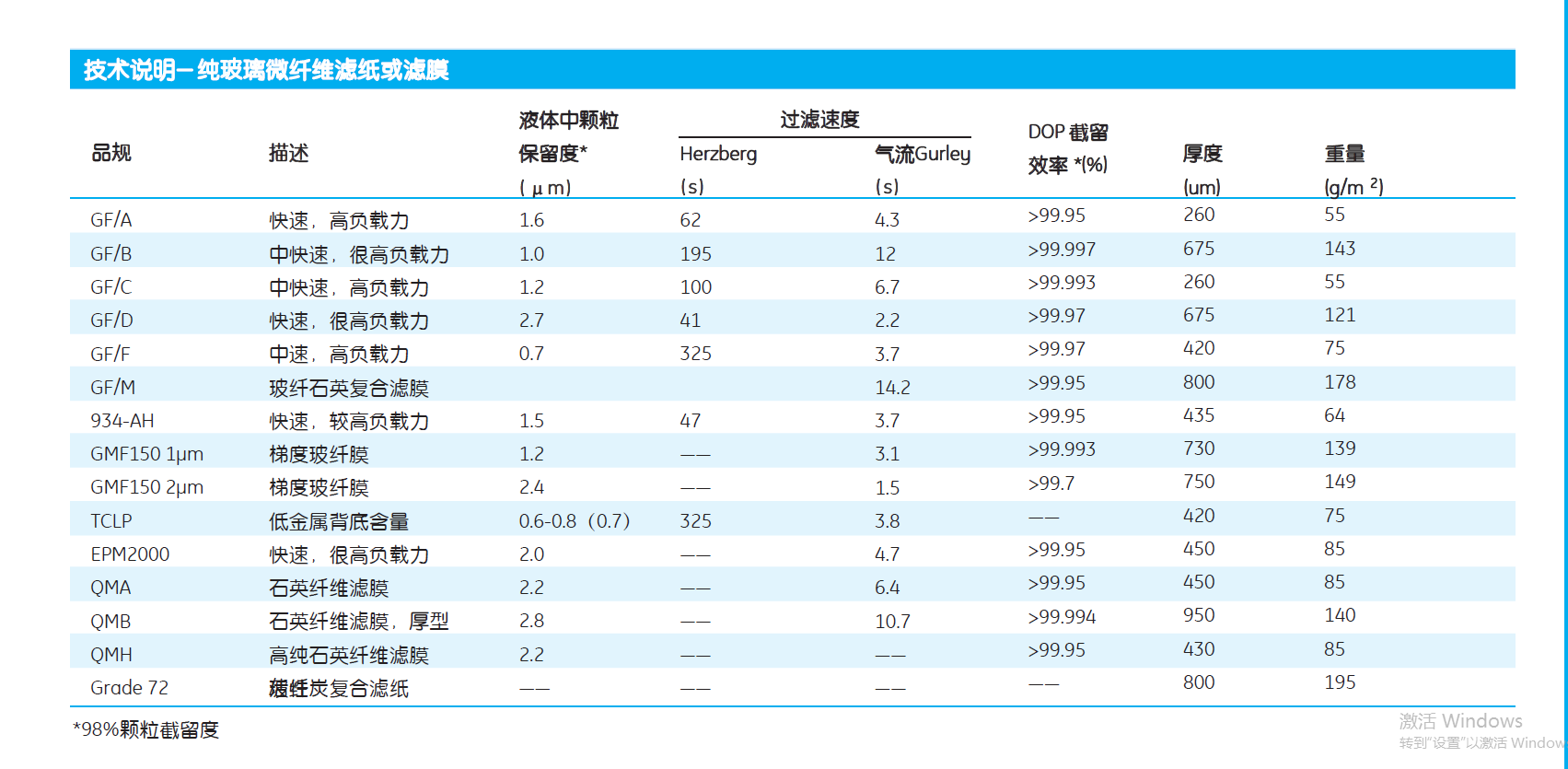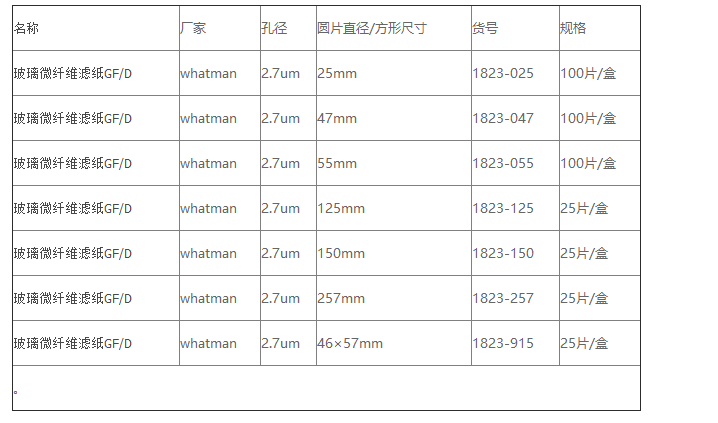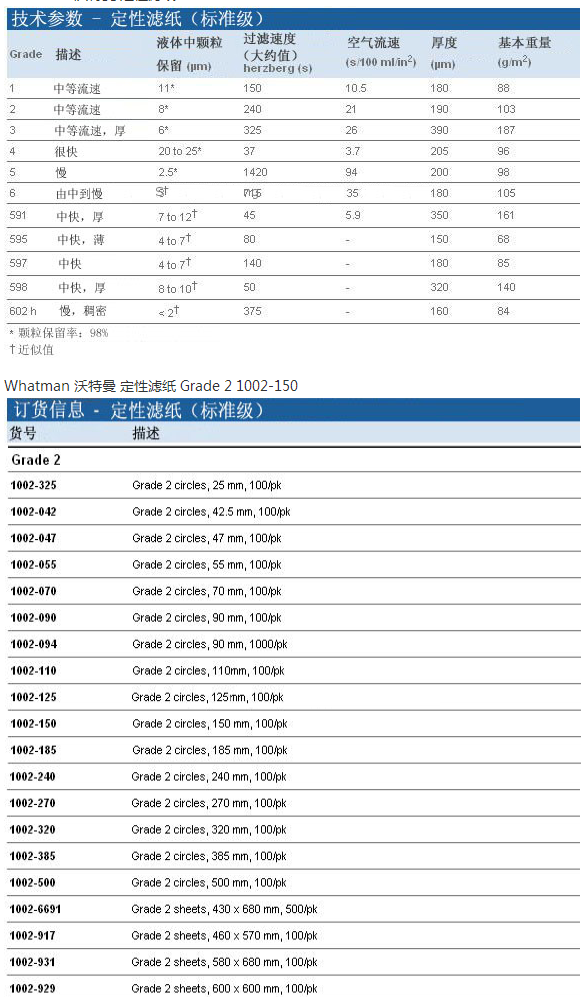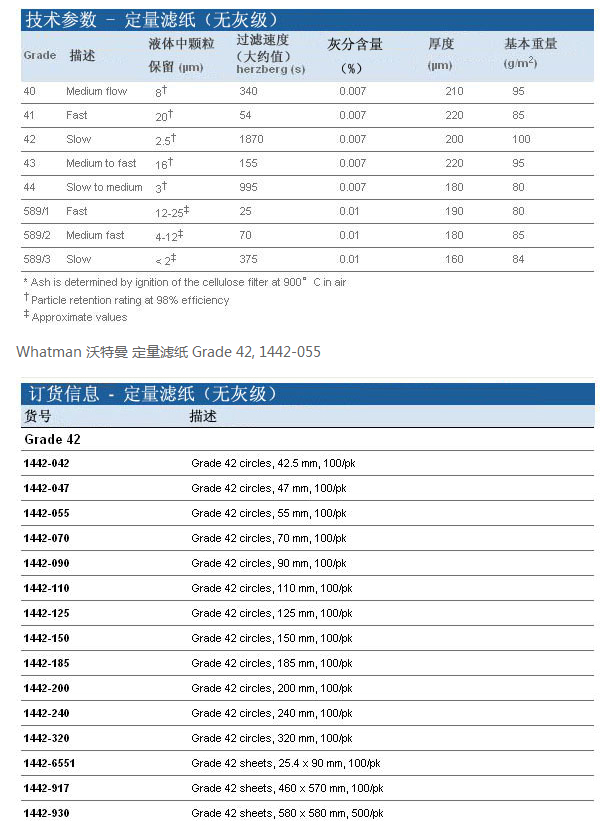产品型号5802-240
品 牌沃特曼
厂商性质代理商
Reeve Angel滤纸主要面向机械工程、照明工业、化工处理和电站行业要求,属于非惊喜化学分析的一种滤纸,因此这类滤纸一般不推荐用在只要、环境等分析,但是常用于啤酒样品的快速过滤。“GE Whatman沃特曼802 Fluted滤纸 预折叠纤维素滤纸”
详情介绍
GE Whatman沃特曼802 Fluted滤纸 预折叠纤维素滤纸
Reeve Angel滤纸主要面向机械工程、照明工业、化工处理和电站行业要求,属于非惊喜化学分析的一种滤纸,因此这类滤纸一般不推荐用在只要、环境等分析,但是常用于啤酒样品的快速过滤。
GE Whatman沃特曼802 Fluted滤纸 预折叠纤维素滤纸技术参数:
| 预折叠纤维素滤纸(v) | |||||
| 型号名称 | 产品描述 | 颗粒截留度(um) | 负载能力 | 厚度/um | 基本重量g/m2 |
| 800号 | 慢速,细颗粒物 | 1-5um | 低 | 190 | 100 |
| 801号 | 湿强型,光滑表面 | 9-14um | 中等 | 150 | 68 |
| 802号 | 湿强型,皱纹纸 | 5-30um | 中等 | 260 | 73 |
| 830号 | 快速和高负载,皱纹纸 | 25-30um | 高 | 400 | 123 |
订购信息:
5200-090 200号 9CM 100/PK
5200-125 200号 12.5CM 100/PK
5200-185 200号 18.5CM 100/PK
5211-185 211号 18.5CM 100/PK
5211-930 211号 58x58CM 100/PK
5226-190 226号 19CM 1000/PK
5226-200 226号 20CM 1000/PK
5226-330 226号 33cm 1000/PK
5226-848 226号 8INx8IN 1000/PK
5230-090 230号 9CM 50/PK
5230-125 230号 12.5CM 50/PK
5230-185 230号 18.5CM 50/PK
5230-200 230号 20CM 50/PK
5230-240 230号 24CM 50/PK
5230-250 230号 25CM 50/PK
5230-330 230号 33CM 50/PK
5230-500 230号 50CM 50/PK
5201-090 201号 9CM 100/PK
5201-110 201号 11CM 100/PK
5201-150 201号 15CM 100/PK
5201-185 201号 18.5CM 100/PK
5201-240 201号 24CM 100/PK
5201-320 201号 32CM 100/PK
5201-330 201号 33CM 100/PK
5201-911 201号 14x19CM 500/PK
5201-940 201号 47x58CM 500/PK
5202-090 202号 9CM 100/PK
5202-110 202号 11CM 100/PK
5202-125 202号 12.5CM 100/PK
5202-150 202号 15CM 100/PK
5202-185 202号 18.5CM 100/PK
5202-200 202号 20CM 100/PK
5202-240 202号 24CM 100/PK
5202-250 202号 25CM 100/PK
5202-320 202号 32CM 100/PK
5202-330 202号 33CM 100/PK
5202-400 202号 40CM 100/PK
5305-110 305号 11CM 100/PK
5305-125 305号 12.5CM 100/PK
5305-150 305号 15CM 100/PK
5307-110 307号 11CM 100/PK
5307-125 307号 12.5CM 100/PK
5307-150 307号 15CM 100/PK
5309-110 309号 11CM 100/PK
5309-125 309号 12.5CM 100/PK
5309-150 309号 15CM 100/PK
5801-240 801号 24.0CM 100/PK
5801-320 801号 32.0CM 100/PK
5802-125 802号 12.5CM 100/PK
5802-150 802号 15CM 100/PK
5802-185 802号 18.5CM 100/PK
5802-240 802号 24CM 100/PK
5802-6698 802号 24CM 1000/PK
5802-320 802号 32CM 100/PK
5802-385 802号 38.5CM 100/PK










